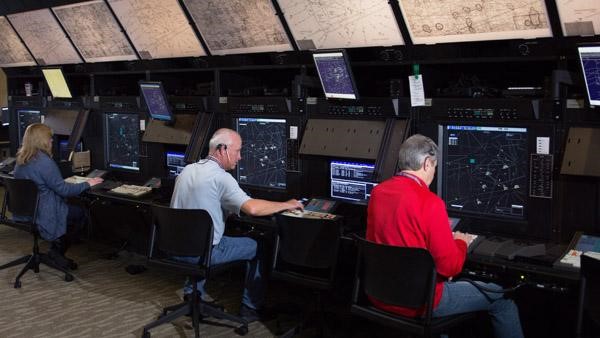Air Traffic Control Entities
Air traffic control is hands down one of the most important aspects when it comes to effective safety and navigation during flight. There are multiple different entities within the broad term of "air traffic control" each responsible for different segments of flight. The two I will be discussing are tower controllers and en route controllers.
"Tower controllers cover aircraft and vehicle movements on taxiways and runways and in the immediate vicinity of the airport" (Tokar, 2018). These controllers work in a literal tower located on an airfield where they can visually see all ground traffic and air traffic within a decent vicinity. Their job is to maintain aircraft separation both visually and with the use of various technology such as radar. Besides handling departing and arriving traffic within their airspace, they also transfer aircraft to "en route center controllers when the aircraft leave their airspace" and vice versa when receiving aircraft from en route center controllers. Overall, they are some of the most important entities within air traffic control as they ensure efficient and safe airport operation. En route controllers do exactly what their name suggests: they direct aircraft during the en route portion of a flight, and therefore they handle aircraft for the longest duration of a flight. These controllers "manage aircraft movements in upper airspace including continental and oceanic routes" using surveillance technology and air navigation systems to keep track of and navigate traffic to their destinations (Arblaster, 2018). Unlike tower controllers, en route controllers work out of air route traffic control centers and will not be seen by aircraft like you can see a tower. Furthermore, while a tower controller is responsible for simply the airspace it is located in, en route controllers are responsible for thousands of square miles of airspace with hundreds to thousands of aircraft located within it. In terms of similarities, both controllers give aircraft advice, clearance, and instruction during flight, and despite their differences, both are essential for safe and proper air travel.References:
Arblaster, M. (2018). Introduction to Air Traffic Management. In Air Traffic Management Economics, regulation and governance (pp. 12–13). essay, Elsevier. Retrieved from https://books.google.com/books?id=Sh8wDwAAQBAJ&pg=PA13&dq=%E2%80%9Cuse+surveillance+technology,+such+as+radar,+to+manage+the+flow+of+aircraft%22&hl=en&sa=X&ved=0ahUKEwi4wcDWlP_bAhXQrFkKHflQDlYQ6AEIKTAA#v=onepage&q&f=false.
Tokar Jul 18, S. (2018). What is Air Traffic Control? Southern New Hampshire University. Retrieved from https://www.snhu.edu/about-us/newsroom/stem/what-is-air-traffic-control#:~:text=According%20to%20the%20FAA's%20Controller,clearance%20delivery%20and%20flight%20data.


Comments
Post a Comment